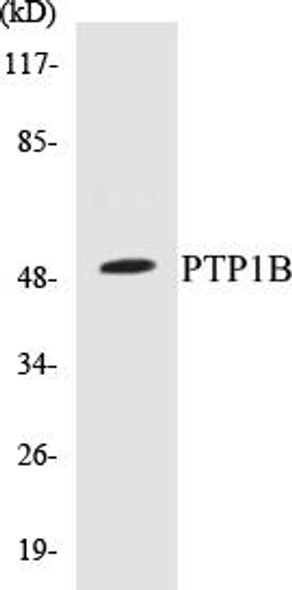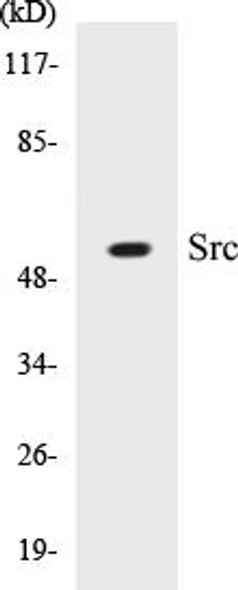Description
PDGFB Colorimetric Cell-Based ELISA Kit
The Human PDGFB (Platelet-Derived Growth Factor Subunit B) Colorimetric Cell-Based ELISA Kit is specifically designed for the accurate quantification of PDGFB levels in cell culture supernatants. This kit offers high sensitivity and specificity, ensuring reliable and reproducible results for research applications in the fields of cancer, cardiovascular diseases, and tissue regeneration.PDGFB is a key player in cell growth, proliferation, and differentiation, making it a crucial factor in various physiological and pathological processes.
Its involvement in promoting angiogenesis, tissue repair, and tumor growth makes it a valuable biomarker for studying disease progression and potential therapeutic interventions.With this ELISA kit, researchers can confidently measure PDGFB levels in cell-based experiments, providing valuable insights into the mechanisms underlying PDGFB-mediated effects and facilitating the development of targeted therapies. Experience the precision and convenience of the Human PDGFB Colorimetric Cell-Based ELISA Kit for your research needs.
| Product Name: | PDGFB Colorimetric Cell-Based ELISA |
| Product Code: | CBCAB00190 |
| ELISA Type: | Cell-Based |
| Target: | PDGFB |
| Reactivity: | Human, Mouse, Rat |
| Dynamic Range: | > 5000 Cells |
| Detection Method: | Colorimetric 450 nmStorage/Stability:4°C/6 Months |
| Format: | 96-Well Microplate |
The PDGFB Colorimetric Cell-Based ELISA Kit is a convenient, lysate-free, high throughput and sensitive assay kit that can detect PDGFB protein expression profile in cells. The kit can be used for measuring the relative amounts of PDGFB in cultured cells as well as screening for the effects that various treatments, inhibitors (ie siRNA or chemicals), or activators have on PDGFB.
Qualitative determination of PDGFB concentration is achieved by an indirect ELISA format. In essence, PDGFB is captured by PDGFB-specific primary antibodies while the HRP-conjugated secondary antibodies bind the Fc region of the primary antibody. Through this binding, the HRP enzyme conjugated to the secondary antibody can catalyze a colorimetric reaction upon substrate addition. Due to the qualitative nature of the Cell-Based ELISA, multiple normalization methods are needed:
| 1. | A monoclonal antibody specific for human GAPDH is included to serve as an internal positive control in normalizing the target absorbance values. |
| 2. | Following the colorimetric measurement of HRP activity via substrate addition, the Crystal Violet whole-cell staining method may be used to determine cell density. After staining, the results can be analysed by normalizing the absorbance values to cell amounts, by which the plating difference can be adjusted. |
| Database Information: | Gene ID: 5155, UniProt ID: P01127, OMIM: 190040, Unigene: Hs.1976 |
| Gene Symbol: | PDGFB |
| Sub Type: | None |
| UniProt Protein Function: | PDGFB: Growth factor that plays an essential role in the regulation of embryonic development, cell proliferation, cell migration, survival and chemotaxis. Potent mitogen for cells of mesenchymal origin. Required for normal proliferation and recruitment of pericytes and vascular smooth muscle cells in the central nervous system, skin, lung, heart and placenta. Required for normal blood vessel development, and for normal development of kidney glomeruli. Plays an important role in wound healing. Signaling is modulated by the formation of heterodimers with PDGFA. A chromosomal aberration involving PDGFB is found in dermatofibrosarcoma protuberans. Translocation t(17;22)(q22;q13) with PDGFB. Belongs to the PDGF/VEGF growth factor family. |
| UniProt Protein Details: | Protein type:Oncoprotein; Secreted, signal peptide; Motility/polarity/chemotaxis; Secreted Chromosomal Location of Human Ortholog: 22q13.1 Cellular Component: Golgi membrane; extracellular space; cell surface; basolateral plasma membrane; endoplasmic reticulum lumen; cytoplasm; extracellular region Molecular Function:collagen binding; identical protein binding; protein binding; protein homodimerization activity; growth factor activity; protein heterodimerization activity; platelet-derived growth factor binding; platelet-derived growth factor receptor binding; superoxide-generating NADPH oxidase activator activity; chemoattractant activity Biological Process: extracellular matrix organization and biogenesis; positive regulation of cyclin-dependent protein kinase activity; nerve growth factor receptor signaling pathway; positive regulation of transcription, DNA-dependent; heart development; positive regulation of fibroblast growth factor receptor signaling pathway; cell projection biogenesis; protein amino acid phosphorylation; positive regulation of MAP kinase activity; monocyte chemotaxis; positive regulation of fibroblast proliferation; positive chemotaxis; transforming growth factor beta receptor signaling pathway; cell growth; positive regulation of mitotic cell cycle, embryonic; response to drug; substrate-bound cell migration; platelet activation; fibroblast growth factor receptor signaling pathway; positive regulation of mitosis; positive regulation of chemotaxis; activation of protein kinase B; positive regulation of blood vessel endothelial cell migration; positive regulation of protein amino acid autophosphorylation; positive regulation of phosphoinositide 3-kinase cascade; positive regulation of peptidyl-tyrosine phosphorylation; activation of protein kinase activity; blood vessel morphogenesis; positive regulation of endothelial cell proliferation; negative regulation of transcription, DNA-dependent; actin cytoskeleton organization and biogenesis; embryonic placenta development; peptidyl-tyrosine phosphorylation; positive regulation of smooth muscle cell proliferation; platelet-derived growth factor receptor signaling pathway; positive regulation of smooth muscle cell migration; response to estradiol stimulus; response to insulin stimulus; platelet degranulation; positive regulation of MAPKKK cascade; positive regulation of glomerular filtration; positive regulation of cell proliferation; response to wounding; hemopoiesis; DNA replication; negative regulation of cell migration; epidermal growth factor receptor signaling pathway; phosphoinositide-mediated signaling; negative regulation of phosphatidylinositol biosynthetic process; positive regulation of phosphoinositide 3-kinase activity; peptidyl-serine phosphorylation; response to hypoxia; innate immune response; blood coagulation; positive regulation of DNA replication; positive regulation of cell migration Disease: Meningioma, Familial, Susceptibility To; Dermatofibrosarcoma Protuberans; Basal Ganglia Calcification, Idiopathic, 5; Basal Ganglia Calcification, Idiopathic, 1 |
| NCBI Summary: | The protein encoded by this gene is a member of the platelet-derived growth factor family. The four members of this family are mitogenic factors for cells of mesenchymal origin and are characterized by a motif of eight cysteines. This gene product can exist either as a homodimer (PDGF-BB) or as a heterodimer with the platelet-derived growth factor alpha polypeptide (PDGF-AB), where the dimers are connected by disulfide bonds. Mutations in this gene are associated with meningioma. Reciprocal translocations between chromosomes 22 and 17, at sites where this gene and that for collagen type 1, alpha 1 are located, are associated with a particular type of skin tumor called dermatofibrosarcoma protuberans resulting from unregulated expression of growth factor. Two alternatively spliced transcript variants encoding different isoforms have been identified for this gene. [provided by RefSeq, Feb 2013] |
| UniProt Code: | P01127 |
| NCBI GenInfo Identifier: | 129724 |
| NCBI Gene ID: | 5155 |
| NCBI Accession: | P01127.1 |
| UniProt Secondary Accession: | P01127,P78431, Q15354, Q6FHE7, Q9UF23, G3XAG8, |
| UniProt Related Accession: | P01127 |
| Molecular Weight: | 241 |
| NCBI Full Name: | Platelet-derived growth factor subunit B |
| NCBI Synonym Full Names: | platelet-derived growth factor beta polypeptide |
| NCBI Official Symbol: | PDGFB |
| NCBI Official Synonym Symbols: | SIS; SSV; IBGC5; PDGF2; c-sis; PDGF-2 |
| NCBI Protein Information: | platelet-derived growth factor subunit B; becaplermin; PDGF, B chain; PDGF subunit B; proto-oncogene c-Sis; platelet-derived growth factor 2; platelet-derived growth factor B chain; platelet-derived growth factor, beta polypeptide (oncogene SIS); platelet-derived growth factor beta polypeptide (simian sarcoma viral (v-sis) oncogene homolog) |
| UniProt Protein Name: | Platelet-derived growth factor subunit B |
| UniProt Synonym Protein Names: | PDGF-2; Platelet-derived growth factor B chain; Platelet-derived growth factor beta polypeptide; Proto-oncogene c-Sis; INN: Becaplermin |
| Protein Family: | Platelet-derived growth factor |
| UniProt Gene Name: | PDGFB |
| UniProt Entry Name: | PDGFB_HUMAN |
| Component | Quantity |
| 96-Well Cell Culture Clear-Bottom Microplate | 2 plates |
| 10X TBS | 24 mL |
| Quenching Buffer | 24 mL |
| Blocking Buffer | 50 mL |
| 15X Wash Buffer | 50 mL |
| Primary Antibody Diluent | 12 mL |
| 100x Anti-Phospho Target Antibody | 60 µL |
| 100x Anti-Target Antibody | 60 µL |
| Anti-GAPDH Antibody | 60 µL |
| HRP-Conjugated Anti-Rabbit IgG Antibody | 12 mL |
| HRP-Conjugated Anti-Mouse IgG Antibody | 12 mL |
| SDS Solution | 12 mL |
| Stop Solution | 24 mL |
| Ready-to-Use Substrate | 12 mL |
| Crystal Violet Solution | 12 mL |
| Adhesive Plate Seals | 2 seals |
The following materials and/or equipment are NOT provided in this kit but are necessary to successfully conduct the experiment:
- Microplate reader able to measure absorbance at 450 nm and/or 595 nm for Crystal Violet Cell Staining (Optional)
- Micropipettes with capability of measuring volumes ranging from 1 µL to 1 ml
- 37% formaldehyde (Sigma Cat# F-8775) or formaldehyde from other sources
- Squirt bottle, manifold dispenser, multichannel pipette reservoir or automated microplate washer
- Graph paper or computer software capable of generating or displaying logarithmic functions
- Absorbent papers or vacuum aspirator
- Test tubes or microfuge tubes capable of storing ≥1 ml
- Poly-L-Lysine (Sigma Cat# P4832 for suspension cells)
- Orbital shaker (optional)
- Deionized or sterile water
*Note: Protocols are specific to each batch/lot. For the correct instructions please follow the protocol included in your kit.
| Step | Procedure |
| 1. | Seed 200 µL of 20,000 adherent cells in culture medium in each well of a 96-well plate. The plates included in the kit are sterile and treated for cell culture. For suspension cells and loosely attached cells, coat the plates with 100 µL of 10 µg/ml Poly-L-Lysine (not included) to each well of a 96-well plate for 30 minutes at 37°C prior to adding cells. |
| 2. | Incubate the cells for overnight at 37°C, 5% CO2. |
| 3. | Treat the cells as desired. |
| 4. | Remove the cell culture medium and rinse with 200 µL of 1x TBS, twice. |
| 5. | Fix the cells by incubating with 100 µL of Fixing Solution for 20 minutes at room temperature. The 4% formaldehyde is used for adherent cells and 8% formaldehyde is used for suspension cells and loosely attached cells. |
| 6. | Remove the Fixing Solution and wash the plate 3 times with 200 µL 1x Wash Buffer for five minutes each time with gentle shaking on the orbital shaker. The plate can be stored at 4°C for a week. |
| 7. | Add 100 µL of Quenching Buffer and incubate for 20 minutes at room temperature. |
| 8. | Wash the plate 3 times with 1x Wash Buffer for 5 minutes each time. |
| 9. | Add 200 µL of Blocking Buffer and incubate for 1 hour at room temperature. |
| 10. | Wash 3 times with 200 µL of 1x Wash Buffer for 5 minutes each time. |
| 11. | Add 50 µL of 1x primary antibodies (Anti-PDGFB Antibody and/or Anti-GAPDH Antibody) to the corresponding wells, cover with Parafilm and incubate for 16 hours (overnight) at 4°C. If the target expression is known to be high, incubate for 2 hours at room temperature. |
| 12. | Wash 3 times with 200 µL of 1x Wash Buffer for 5 minutes each time. |
| 13. | Add 50 µL of 1x secondary antibodies (HRP-Conjugated AntiRabbit IgG Antibody or HRP-Conjugated Anti-Mouse IgG Antibody) to corresponding wells and incubate for 1.5 hours at room temperature. |
| 14. | Wash 3 times with 200 µL of 1x Wash Buffer for 5 minutes each time. |
| 15. | Add 50 µL of Ready-to-Use Substrate to each well and incubate for 30 minutes at room temperature in the dark. |
| 16. | Add 50 µL of Stop Solution to each well and read OD at 450 nm immediately using the microplate reader. |
(Additional Crystal Violet staining may be performed if desired – details of this may be found in the kit technical manual.)






